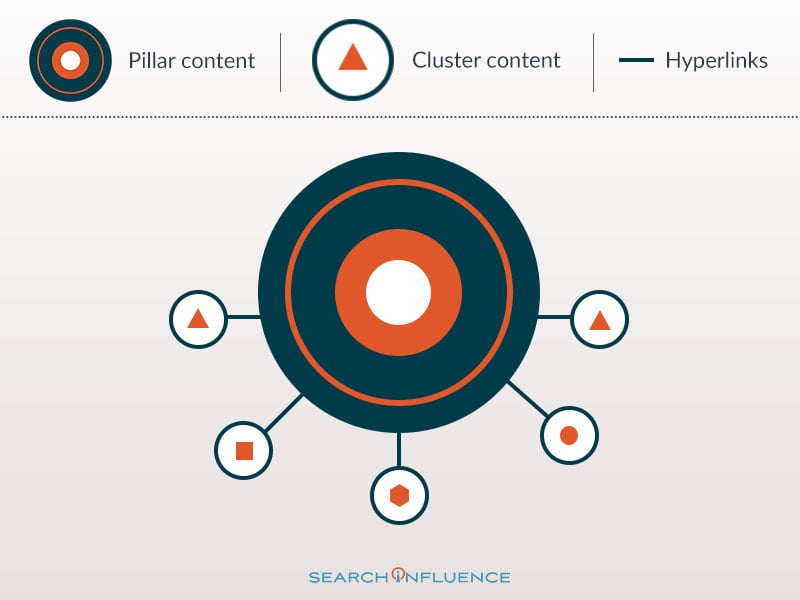Prop Up Your SEO Strategy With Pillar Pages and Topic Clusters
September 23rd, 2019 by
If you haven’t heard of pillar pages, don’t feel bad; they’re relatively new to the SEO scene, with the term coined by Hubspot in 2017. However, they’ve been taking over content marketing strategy discussions since their relatively recent inception, and this new system of structuring content is proving to be beneficial to both the user and the site’s SEO.
What Is a Pillar Page?
A pillar page is a content-rich page on a website that broadly covers a topic. Hubspot created pillar pages as a technique for restructuring their blog, but they can apply to information pages and service pages, as well. Pillar pages divide your site’s content into “topic clusters,” which don’t focus on a specific keyword, but rather a general topic. The pillar page is the main body of content on the topic, linking to more specific pages. Think of pillar pages as “Topic 101,” and the links provide more in-depth information.
How Do Pillar Pages Affect SEO?
Pillar pages help improve user experience by making your site easier to navigate. In addition to increasing the likelihood of having repeat visitors or higher conversion rates, better user experience can also increase your site’s SEO rankings. Google tracks engagement metrics, such as dwell time, bounce rates, and click-through rates (CTR). Since pillar pages are long content pages with several internal links leading to relevant and highly detailed pages, readers are more likely to spend more time on your site and generate a high CTR. The reason Google tracks engagement metrics is because it signifies that the reader found your site to be helpful; the longer someone stays on your site and the more internal links they click, the better it looks in Google’s eyes—it shows that your site accurately reflects the information that the SERP gave and that people want to read your content. Having links to relevant pages also helps Google’s algorithm determine that the pillar page accurately reflects the search term.
How Do You Create a Pillar Page?
If you’re ready to revamp your content marketing strategy and create pillar pages, you first need to determine the topic clusters you want to organize your site around. For example, a cosmetic surgeon could have pillar pages about body contouring, breast augmentation, and facial procedures. The pillar page itself will likely be longer than your normal service page or blog page, giving a detailed overview of the topic.
You should also conduct SEO semantic research to find the best keywords and anchor text for your topic clusters.
The pillar page should also be easy to navigate; it should have several line breaks or even a table of contents to help readers navigate the subtopics. You don’t need to have the in-depth subtopic pages already written; you can add links to them on the pillar page as you build these secondary pages out.
Because they are long, detailed, and content-heavy, pillar pages may seem intimidating. However, they’re really just a way to restructure your content to make it easier for both readers and search engines. If you’re looking to revamp your content marketing strategy, the experts at Search Influence are here to help. We have all the tools to help you create a phenomenal pillar page. Reach out to one of our strategists today.
Images:
Google Gif



